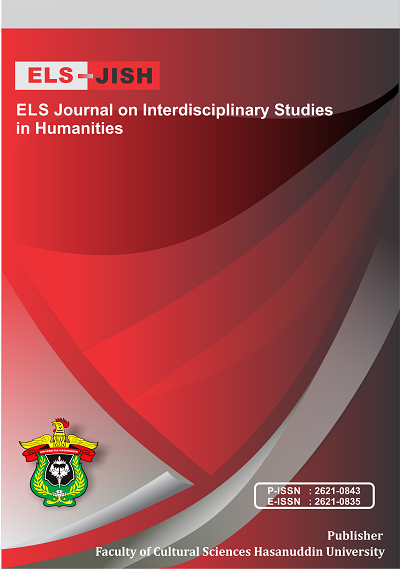The Ternary Object: On Shinichiro Kurimoto’s Theory of Levels
DOI:
https://doi.org/10.34050/elsjish.v5i2.19878Keywords:
Shinichiro Kurimoto, Theory of Levels, Japanese ThoughtAbstract
This brief article has two objectives. First, it aims to provide a concise and lucid elucidation of Theory of Levels, an ontological system which the veteran Japanese thinker Shinichiro Kurimoto first invented in the early 1980s and has ever refined through the course of his decades-long career. Second, it intends to demonstrate with cogency that the discourse, albeit having been buried in oblivion for quite a while, carries a potential to help one to obtain a new perspective from which to freshly and positively interpret the existential dilemma between our natural sense that each one of us is a unique existence and the sheer reality that every one of us is merely a trivial strand of diverse larger structures.
In order to achieve the objects, the argumentation proceeds in the following order. Taking a survey of the papers in which Kurimoto’s Theory of Levels makes an appearance, the initial part confirms that, though it fis not the case that all academicians have completely disregarded the theory, as yet none of them has conducted a sufficiently comprehensive dissection thereof. Consulting, or rather reconstructing Kurimoto’s laconic account in his 2013 booklet entitled The Last Lecture of Shinichiro Kurimoto, the second part clarifies that the theoretical singularity of Theory of Levels consists in that it enables one to deem an existence to be a ternary object and thereby to get over the apparently insuperable quandary mentioned above. The third part concludes the discussion by indicating that decades after Kurimoto some researchers in natural science come to discuss from their own scientific perspective some views that hold a quite high degree of intimacy with Kurimoto’s theory. The authors of this paper are fully convinced that the Theory of Levels and/or fields upheld by the researchers
mentioned in this paper are worth academic efforts to be scrutinized to close in on the ontological essence of mankind and every other existence alike.
Keywords: Shinichiro Kurimoto, Theory of Levels, Japanese Thought
References
Fukuoka, S. (2009). The world cannot be understood by dissection. Tokyo: Kodansha.
Ise, S. (2002). The hedonistic meme. Traverse, 3, 57-67.
Ishii, N. (2017). Nurture of imagination. Journal of Pharmaceutical Science and Technology, 77(1), 22-24.
Kosaka, S., Takeda, S., & Shiga, T. (1990). An introduction to contemporary thought. Tokyo: Takarajimasha.
Kurimoto, S. (1981). The monkey wearing underpants. Tokyo: Kobunsha.
Kurimoto, S. (1982). A story of Budapest. Tokyo: Shobunsha.
Kurimoto, S. (1988). Meaning and life. Tokyo: Seidosha.
Kurimoto, S. (2013). The last lecture Shinichiro Kurimoto. Tokyo: Bukyu Publishing.
Kurimoto, S., & Kosaka, S. (1985). Criticism on contemporary thought. Tokyo: Sakuhinsha.
Kurimoto, S., & Maruyama, K. (1986). Meaning, life, and excess. Gendai Shiso, 14(3), 176-201.
Mitsui, T. (2016). Optimal parameter design for product manufacturing by division of labor. Mejiro Journal of Management, 14, 37-50.
Nakamasa, M. (2006). Intensive Course in Japanese contemporary thought. Tokyo: NHK Publishing.
Obitsu, R., & Muramatsu, D. (2020). A Recipe for Undulation and Energy. Tokyo: Asuka Shoin.
Ogi, K. (1993). A balance sheet of celebrities. Aera, 6(1), 44.
Polanyi, M. (1968). Life’s irreducible structure. Science, 160, 1308-1312.
Sakuma, H. (2019). Debt that cannot be paid in western Niger. Hakusan Review of Anthropology, 22, 61-79.
Downloads
Published
Issue
Section
License
Copyright (c) 2022 Toshiharu Tateyama, Naruhiko Mikado

This work is licensed under a Creative Commons Attribution-NonCommercial-ShareAlike 4.0 International License.






